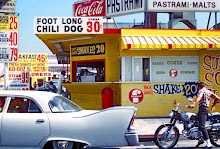The next few projects we will be working on will deal with grid systems. Put simply, grid systems are your framework for arranging and displaying various elements - type, photos, or illustrations. And, as other people have said much better than I have, using a grid on a publication does not stifle your creativity - it helps you organize all the elements you are working with in an attractive way.
In your textbook in Chapter 5, beginning on page 159, there is a discussion of grid systems. Also, in my menu of links on the left, there are two in particular that I want you to look at. The first is http://www.markboulton.co.uk/journal/comments/five-simple-steps-to-designing-grid-systems-part1.html
and this will also give you more information in how to design using a grid.
The next site I want you to look at will give you examples for your next project, the eight-page brochure
http://www.designingwithtype.com/cooperunion.html. If you go to the tenth item in the list, you will be redirected to a page with various samples of brochures which were designed by students at the Cooper Union in New York City. Look at these examples and think about a subject you would like to use in this project and gather as many photos or illustrations as you can find. The more material you have, the easier it will be to assemble this project. Along with this, you will need to write some text and descriptions to go along with your illustrations or photos, and you will assemble all of it into an eight-page brochure.
As with your other projects, the sky is the limit to your creativity.
An Anchor
5 months ago



